Barry Jensen built his first boat, a Sabot sailing dinghy, 55 years ago, when he was just 14 years old. As an adult, working as a librarian in Victoria, British Columbia, he built more boats: a 14′ plywood Petrel sailboat and a couple of cedar-strip kayaks, to name a few. And, while it was in him to retire after a 34-year career doing work that actually put food on the table, he hasn’t been able to shake his habit as a serial boatbuilder.
 Photographs by Barry Jensen
Photographs by Barry JensenThe workboat documented by John Gardner was carvel planked, but Barry decided that he’d strip plank the hull.
It would then come as no surprise that when he flew across Canada to see the sights of the country’s Atlantic seaboard, he came home with one lasting impression: lobsterboats. He turned, instinctively perhaps, to his home library and eventually found his way among the neatly ordered volumes to call number 623.8202 GAR V.2, Building Classic Small Craft, Volume 2, by John Gardner, and landed on chapter 7, page 91: “Down East Workboat.” The boat there was developed in Maine’s Washington County, right across the border from the Canadian province of New Brunswick, and was similar in form to the Canadian Cape Island lobsterboat, native to Cape Sable Island on the south coast of Nova Scotia.
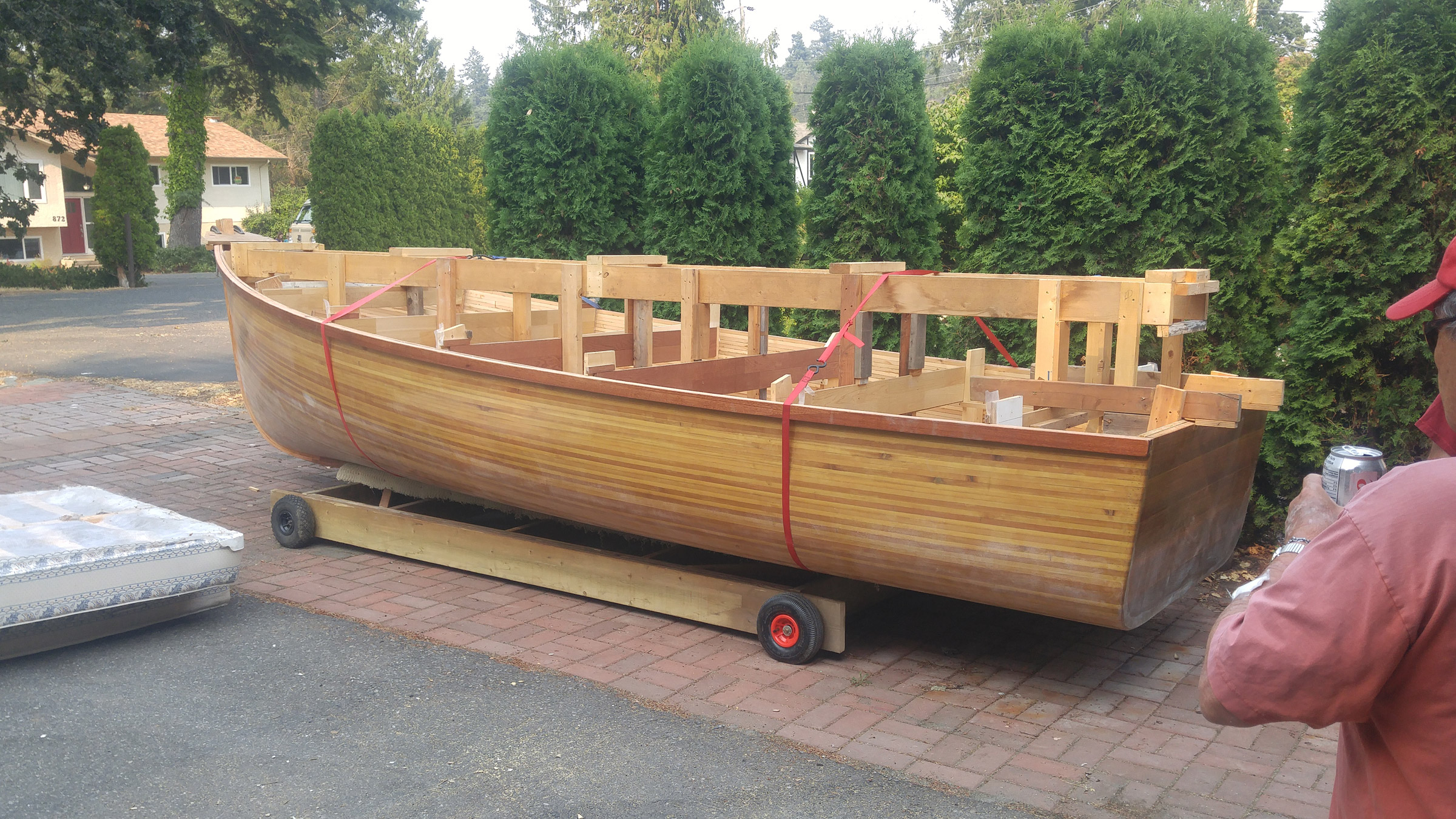
The newly rolled hull rests on the dolly that will trundle it back into the shop. The mattresses at left cushioned the hull for the operation.
While the provenance of the design appealed to Barry, the carvel planking did not—it was not a method he had tried—so he decided on cedar strip, a method he had used on his kayaks, a 7′ pram, and a hull to turn his soft-bottomed inflatable into a RIB.
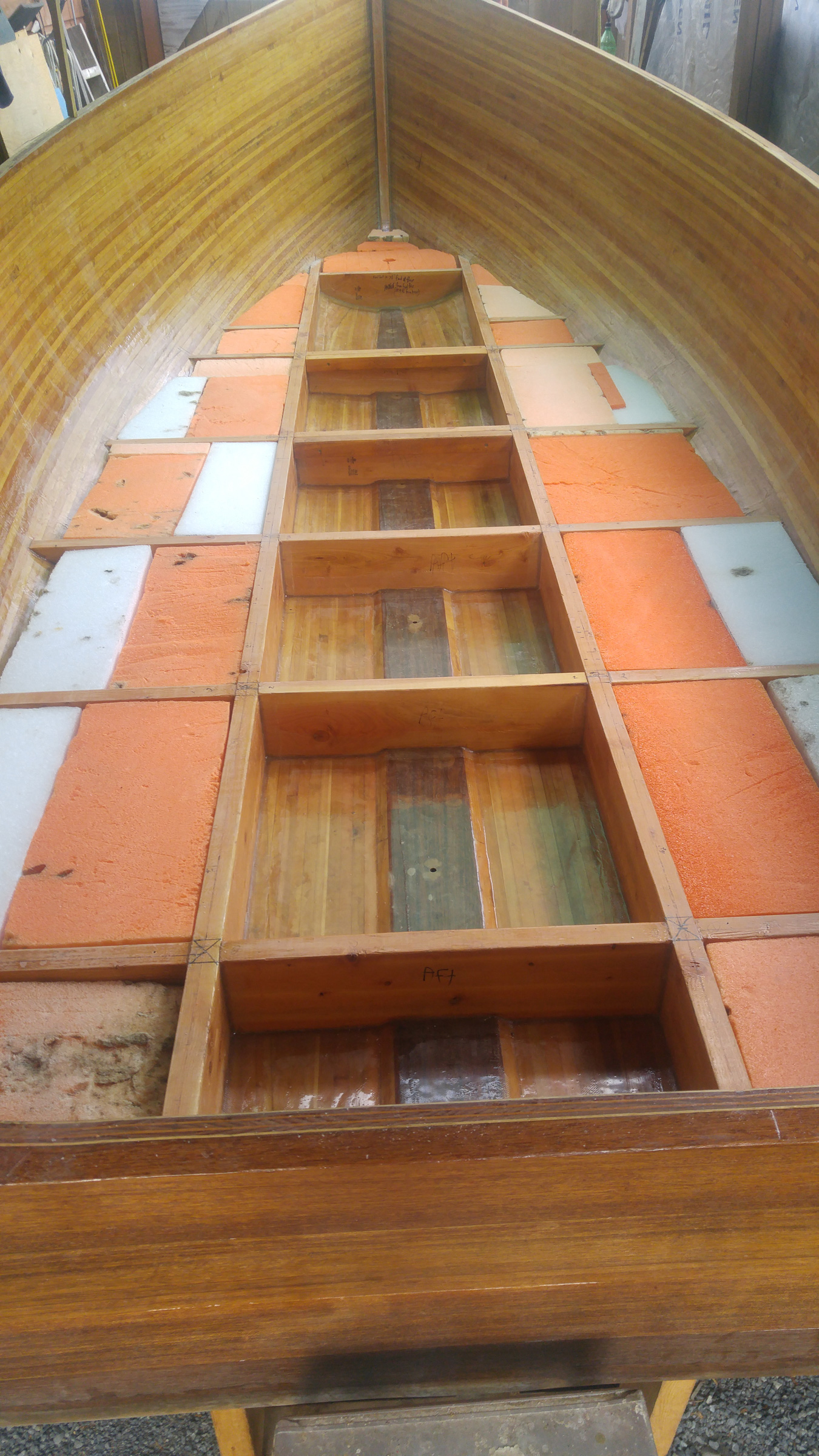
Foam for flotation filled the spaces between the framing members that would support the cockpit sole.
He bought 20′ 1×6 cedar boards from a local lumberyard, cut his own 1/2″ strips, set up the molds, and went to work. His son, Junichi, lives close by and is a good man to have on the job, not only because he works for the B.C. provincial government on building and safety standards, but also because he is a fine anecdotal argument for serial boatbuilding as a genetic condition. Junichi’s first boat, a 13′ strip-built peapod, was featured in a Disney movie filmed in British Columbia. More recently he rebuilt a 14’ cedar Peterborough runabout and converted a 16′ Atkin-designed rowboat that he’d built into a 12′ runabout.
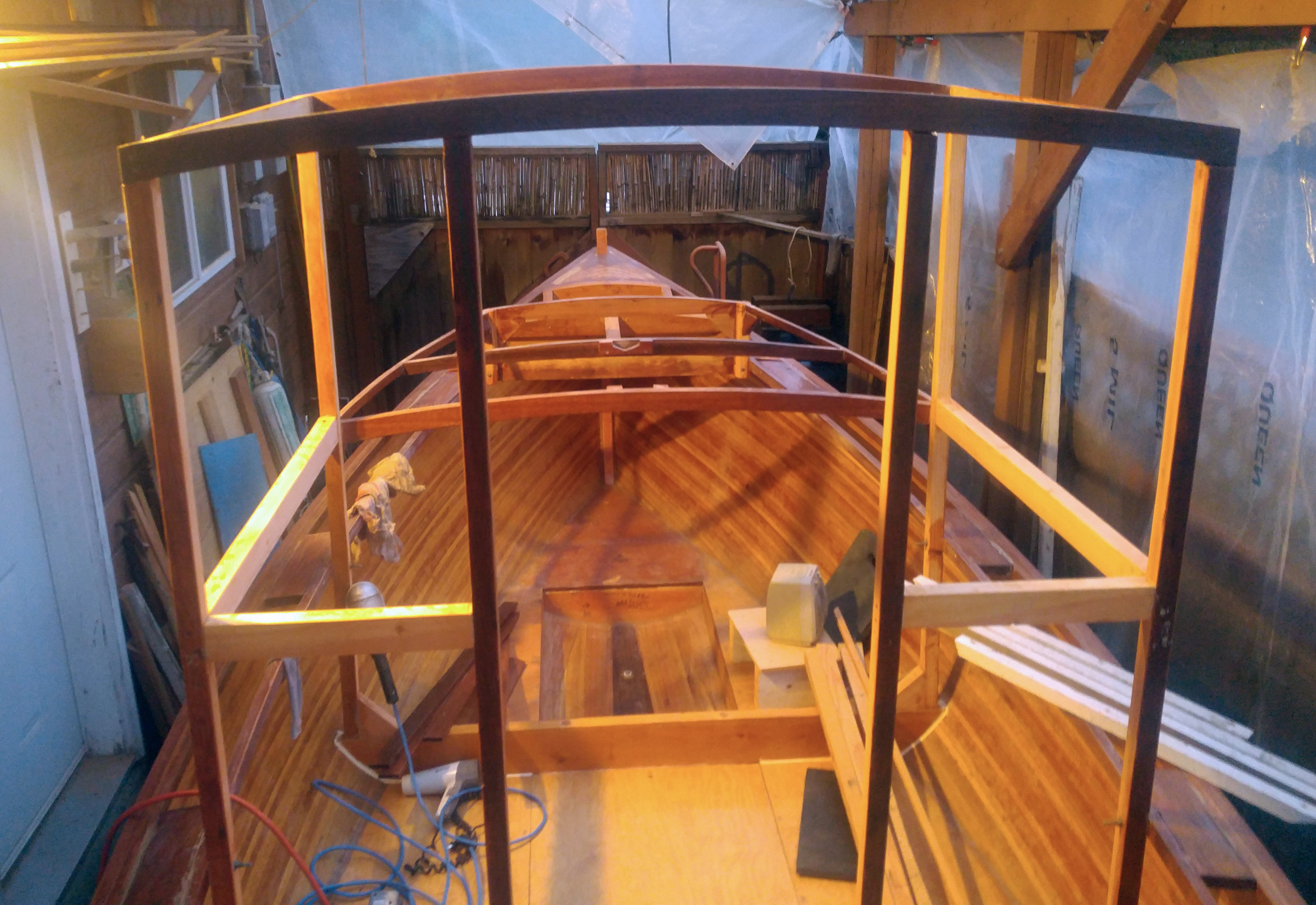
Rather than work out the accommodations on paper, Barry decided on the dimensions and went straight to framing.
Barry and Junichi gave the fully planked workboat hull two layers of 6-oz ’glass and epoxy, and when the time came to flip the hull upright, Junichi arrived with an old mattress. Then father and son, with the help of several neighbors, rolled it from strongback to cradle.
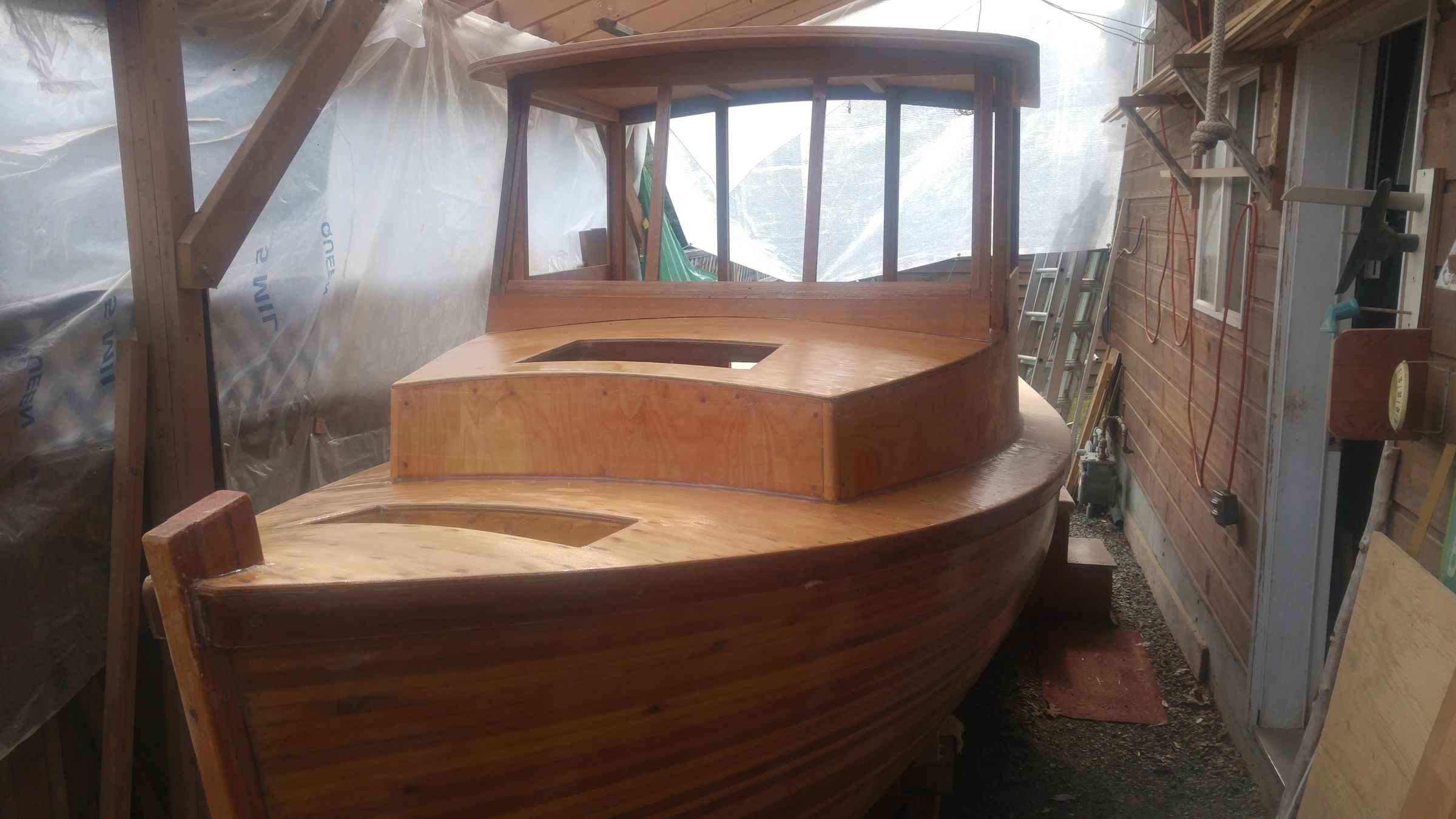
With a bit of plywood defining the shapes of the cabin and pilothouse, the workboat begins to look like a lobsterboat.
After Barry ’glassed the interior, installed two 2×6 stringers, foam flotation, and the cockpit sole, he began to design the forecabin and pilothouse. He had read that there were many compelling arguments why he should not add a cabin and wheelhouse to an open boat, but he had one compelling argument why he could: “It’s my boat.” He set the length of the cabin at 6′ 6″, long enough for a comfortable berth, then mocked-up the pilothouse with 2x2s. When the roofs and walls were in place, Barry installed a solid door with a lock, sliding windows, seats, and the controls at the helm.

The addition of the cabin and pilothouse converted the workboat into a successful pleasure cruiser.
Launch day started with a celebration at the house, attended by family and neighbors, and then moved to the launch ramp at Brentwood Bay, a handful of miles (plus a few more digits in kilometers) north of Victoria. The boat was christened C H K, after the first initials of his three grandkids. A borrowed 20-hp two-stroke was the boat’s first outboard, and when Barry decided that wasn’t enough power, he bought a new 20-hp four-stroke.
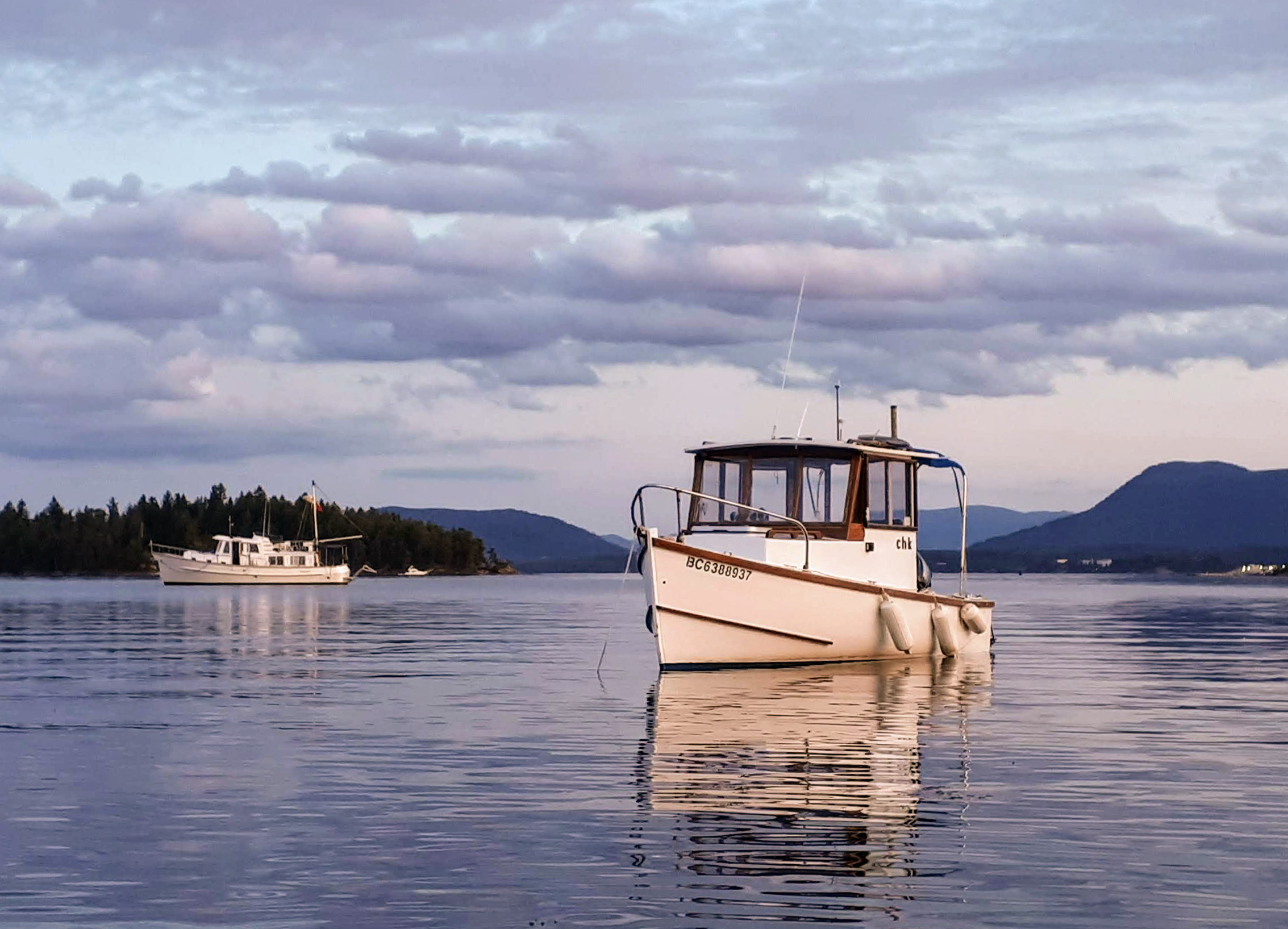
C H K has cruised to Desolation Sound and will have plenty of British Columbia coast to explore in the future.
Barry and C H K are in the heart of beautiful cruising grounds. The summer before the pandemic, he cruised the B.C. coast north some 150 miles to Desolation Sound, and then kept closer to home last summer and meandered through the Gulf Islands. This coming summer, he hopes to travel farther, vaccinations permitting—and if he can put off building his next boat.![]()
Do you have a boat with an interesting story? Please email us. We’d like to hear about it and share it with other Small Boats Magazine readers.

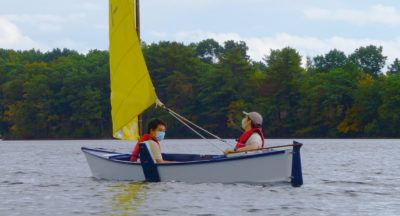
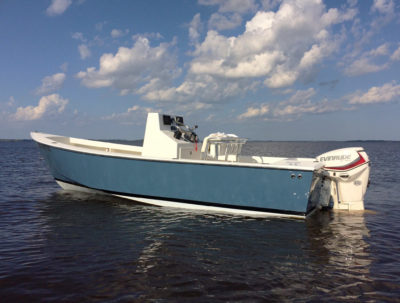
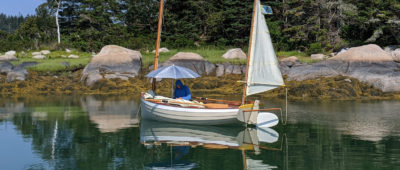
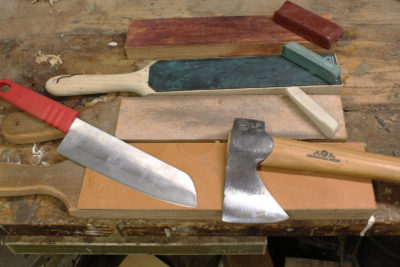
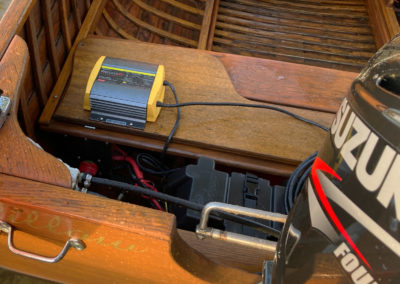
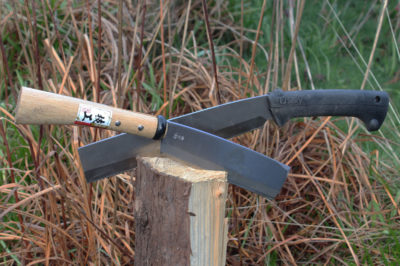
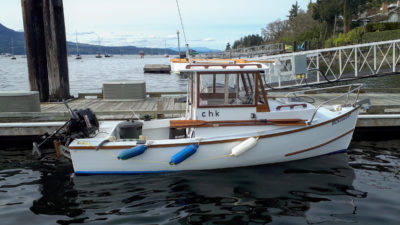

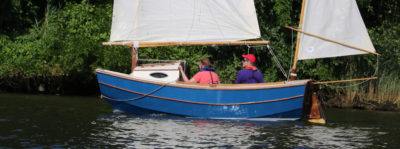
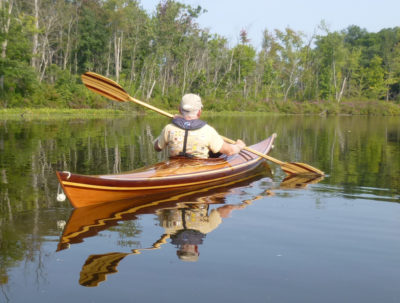
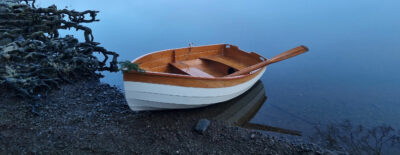
What a great looking “salty” craft!
I would like to see a pic of the finished interior. Also, what are the dimensions?
Thanks John. Appreciate your kind comment.
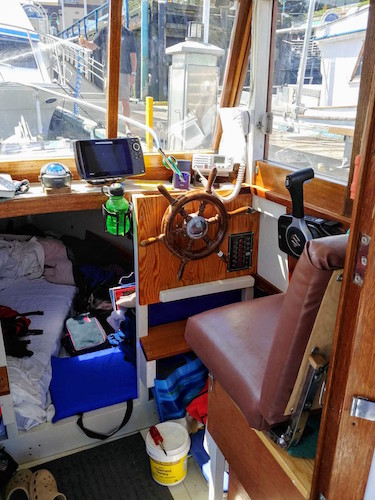
The Down East 18 is 18′ LOA, and 6′ 4″ W. It is 2′ 5″ inside depth amidships.
I’ve included a shot of the interior here. In a nutshell, there is a double v-berth in the forward cabin, and two seats in the pilot house. No room for a sink or stove so I cook in the cockpit. I have a porta-potty that sits in front of the port seat, the helm being on the starboard side.
Thank you and good “sailing!”
Mr Jensen,
For health reasons I have to give up sailing our Whitby 25, which is a f.g. Folkboat with some extras the Nordic Folkboat does not have.
Thank you for showing us what can be done with this pretty boat. I shall very likely go to Brentwood Bay and try to spot CHK and convince my sweetie that this is what we need, sailing out of Maple Bay.
David Phillips
3d July, 2023
Beautiful boat! , I would love to see some more pics of the cabin. Thank you! Saving this build for reference on my current project:)
Barry,
Very nice vessel. I don’t see any fasteners in the pictures – no brass screw heads, for example. I would expect to see some in the pilot-house framing at least. What was your choice of fastening method?
Thanks again for sharing,
Jim Fischer
Thanks, Jim. Sorry for the delay in responding.
I’m going by memory, but here’s my best attempt to answer your question.
In the hull itself, there are no fasteners, since the cedar strips are glued together with Titebond III, then, after fairing, covered in two layers of fiberglass set in WEST system epoxy outside, and one inside. I eventually through-bolted the 2″ by 2″ kayu batu keel to the bottom of the hull with stainless-steel bolts with the heads set into the wood and covered with Sikaflex (in case I ever need to remove them. There are no other fasteners below the waterline that aren’t fully encapsulated, and then only those required to hold things together while the epoxy glue cured. The stringers are glued down with thickened epoxy, and the sole on either side of the middle two-foot wide accessible compartments was screwed down with deck screws, then again fully encapsulated in fiberglass and epoxy.
I set up the deck framing and used galvanized-steel deck screws and glued the framework with epoxy. Eventually, everything was encapsulated in fiberglass and epoxy. I set up the corner posts (after the mock-up as described in Chris’s article), through-bolting them to the carlins and deck beams. Then I added the decks and forecabin sides, again using deck screws to hold everything in place, eventually filleting all joints with thickened epoxy, and covering all surfaces with 6 oz. fiberglass cloth set in epoxy. Similar methods were used for the pilot house.
There are no through-hulls in the boat, and no underwater exposed metal (except when the outboard leg is lowered), no drain plug.
Beautiful job congrats! I am just finishing a Point Comfort 18 which I am intending to equip with a canopy. Your boat is very intriguing. Maybe next time?
Steve
Thanks, Steve.
I considered the Point Comfort too. Beautiful boats!
I had built a canopy, or bimini, over the cockpit last year. (Visible in the last picture.)
This winter, I replaced that with a hard canopy, since I never bothered to collapse the bimini anyway. The hard top is handy for storing stuff temporarily.
Just love why you VIOLATED conventional wisdom: Because it was your boat.
Absolutely gorgeous.
Hi Barry,
My wife Luanne and I met you at Sidney Spit two summers ago when we were aboard our boat Rosie. We have since seen your boat at it’s berth in Brentwood Bay. It puts a smile on my face every time I see it. Hope we cross wakes again sometime. I am a sucker for that lobster-boat look. Rosie’s design was also inspired by a lobster boat.
Cheers,
Ken